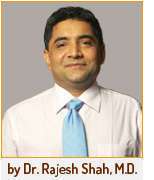
Breast Cancer: Risk Factors and Prevention
Breast cancer is one of the most common cancers occurring in females. Although all the lumps in the breast are not cancerous, a thorough examination by an expert is extremely important.
Symptoms of breast cancer:
- The patient notices a change in the shape of the breast sees a lump or notices a change in the appearance of the skin of the breast
- Sometimes a lump can be felt and seen in the underarms.
- There could be pitting in the breast like the skin of an orange.
- Discharge from the nipples. The discharge could be clear or bloody.
- The lump in the breast could be fixed or movable; it could be stony hard or a little soft. The lump may be painful or painless.
Causes of development of breast cancer: The exact cause of development of breast cancer is not known.
Risk factors:
- Hereditary: if a close family member is suffering from breast cancer then there are higher chances of breast cancer running in the family.
- Early-onset of puberty: Girls who have started menstruating before the age of 12 years are at higher risk of developing breast cancer.
- Late-onset of menopause: The beginning of menopause after the age of 50 years is called late-onset menopause. This is related to increased chances of breast cancer.
- Nulliparous women: Those women who have not conceived anytime are called nulliparous women. Such women are having greater chances of developing cancer than those who have given birth to children.
- Women on HRT (Hormone Replacement Therapy): Those women who are taking pills containing estrogen and progesterone are at higher risk of developing breast cancer.
- Obesity: Obesity is the risk factor for almost all kinds of cancers including breast cancer.
- Alcohol intake: Regular alcohol consumption increases the chances of developing breast cancer in women.
Investigations:
Following investigations are useful in diagnosing breast cancer.
- Mammography of the breast
- Sonography of the breast
- Biopsy
- MRI scan of the breast
Prevention of breast cancer:
- Maintain a healthy body weight: An obese person bears higher chances of developing breast cancer. Keeping the Basal Metabolic Rate (BMI) below 25 is advisable.
- Avoid alcohol consumption
- Doing regular exercises like walking, swimming, jogging, etc reduces the chances of developing breast cancer.
- Increase consumption of fruits and vegetables in the diet. Fruits and vegetables are rich in antioxidants. Antioxidants are known to fight and combat cancer forming free radicals in the body.
- Try to avoid postmenopausal Hormone Replacement Therapy.
Self breast-examination techniques for women
All women should know this technique and they should regularly do self-examination at least once a month after the cessation of the menstrual cycle. The steps for self-breast examination are as follows.
Step 1: Stand in front of the mirror and just observe the breasts for size, color change, any retraction, visible lump, or crusting of nipples.
Step 2: Raise both arms up, notice that both the breasts rise evenly on the chest wall.
Step 3: Now lie down on the bed without using a pillow. With the flat palm palpate the breast slowly but firmly in a circular pattern. Start palpating from the outer area and slowly move towards the nipples and areola.
Step 4: If you feel any lumps, try to identify its feeling. Most of the time you will get a feeling of “marble in the bag of grainsâ€
Step 5: Examine the armpits. Look for any swelling or lymph node enlargement in the armpit.
Step 6: See if any discharge is coming through the nipple.
Step 7: Repeat the same steps for the other breast also.
One can easily note any abnormality in the breast at the earliest by doing a regular self-examination of the breast. The early diagnosis helps in preventing the spread of cancer to the surrounding tissues and organs. Early diagnosis and treatment can considerably help in improving the prognosis of the disease.
Treatment of breast cancer: Treatment depends on the stage of cancer and its spread. The cancerous part has to be removed by the surgeon. When there is spread of cancer to other organs surgeon decides the further line of treatment.
Dr Shah's research on Cancer:
Dr Shah's recent research using some of his new medicines has demonstrated anti-cancer effects in lab models. Please check the links:
a. HIV nosode produces anti-cancer effects (Therapeutic potential of HIV nosode 30c as evaluated in A549 lung cancer cells)
b. A homeopathic nosode, Hepatitis C 30 demonstrates anticancer effect against liver cancer cells in vitro by modulating telomerase and topoisomerase II activities as also by promoting apoptosis via an intrinsic mitochondrial pathway.
Related Condition
Written & Approved by-
Dr. Rajesh Shah
M.D. (Hom.)